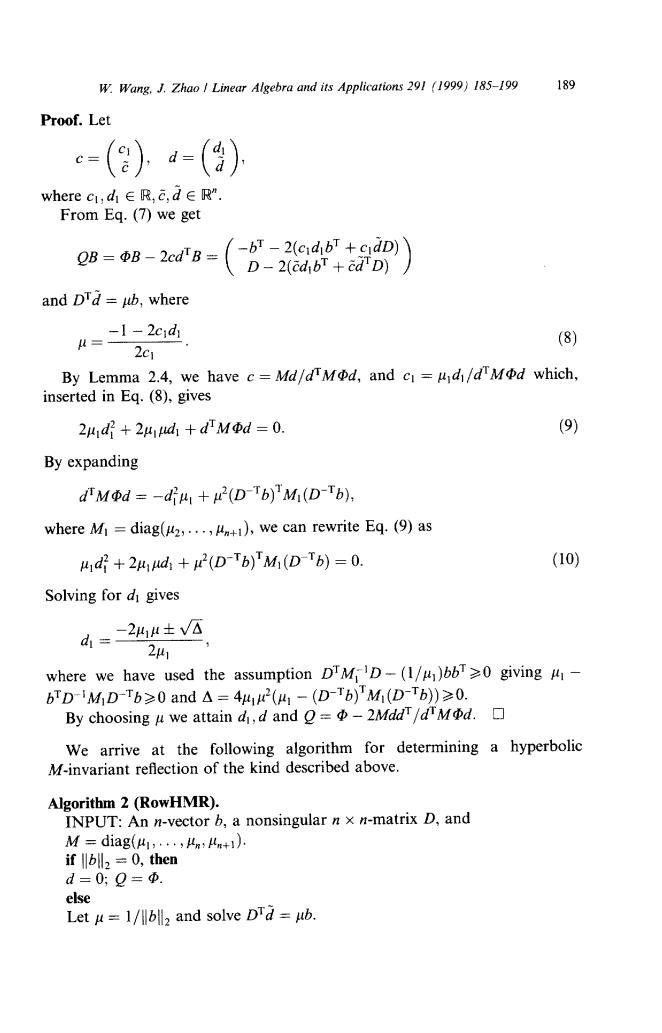正在加载图片...

W.Wang.J.Zhao Linear Algebra and its Applications 291 (1999)185-199 189 Proof.Let c=()a-() where c,d4∈R,c,deR". From Eq.(7)we get QB=ΦB-2cdrB=( -bT-2(cid bT +cidD) D-2(cd bT +cd D) and D'd=ub,where 4=-J-2cd (8) 2c1 By Lemma 2.4,we have c=Md/dM d,and c=ud/dMod which, inserted in Eq.(8),gives 241d+24d+dMΦd=0. (9) By expanding dMod=-du+(D-b)'Mi(D-Tb), where M=diag(2,...,),we can rewrite Eq.(9)as ud2+2uud+(D-Tb)Mi(D-Tb)=0. (10) Solving for di gives d=-2A±V公 241 where we have used the assumption DTMD-(1/u)bbT20 giving bDMD-Tb≥0and△=4412(41-(D-Tb)'M1(D-Tb)≥0. By choosing u we attain di,d and =-2MddT/dMd. We arrive at the following algorithm for determining a hyperbolic M-invariant reflection of the kind described above. Algorithm 2(RowHMR). INPUT:An n-vector b,a nonsingular n x n-matrix D,and M=diag(,...,). if lb2=0,then d=0;Q=Φ. else Let u=1/lbll2 and solve DTd ub